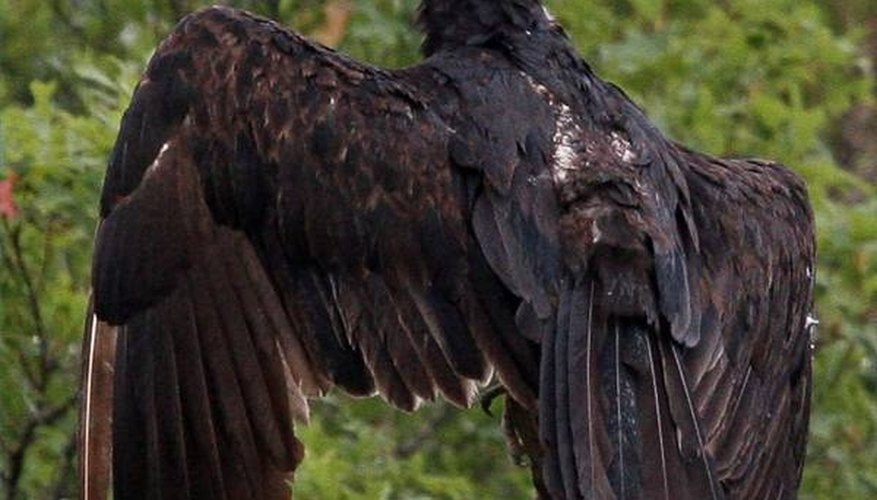
The turkey vulture is also known as a buzzard in the United States; it is a common scavenger species of bird. Its range extends from Canada south throughout the continental U.S. and into the middle of South America. The turkey vulture is far less handsome than its relatives, storks and ibises, and is quite large and easy to spot.
Size
An adult turkey vulture is a big bird, measuring up to 32 inches from head to tail. When the wings are fully extended, it has a wingspan of up to six feet. The average healthy adult weighs as much as six pounds.
Color
The feathers of the turkey vulture are dark brown to nearly black, with a somewhat shiny appearance in the sunlight. From below, the wing feathers actually have a slivery look. However, the head of the turkey vulture is completely bald. It is covered with bare, red skin. The head of the buzzard is disproportionately small in comparison to its body. The feet and the legs are orange, and the hooked bill is dull yellow.
Characteristics
The turkey vulture's head is bald because of the food it subsists on. These birds use their incredible sense of smell to locate dead animals and then descend from the sky to feed. A turkey buzzard will often stick its entire head inside a dead animal's carcass to eat. Having head feathers would allow dangerous bacteria to stick and then thrive after the bird has eaten. With its bare head, the turkey vulture can eat, get covered with viscera and bacteria, and then sit where the heat from the sun's rays destroys and dries out what remains.
Flight Habits
When a turkey vulture flies, its wings stay in a V shape, and it rarely ever flaps them. Instead, it soars, often low to the ground as it searches for food. The turkey vulture will wait in its perch for the sun to come out and warm the air, then it will ride the thermal currents. The birds circle upward into the thermal current; once at the top, they plummet downward until they find another current to ride, never once flapping their wings. An observer on the ground will notice the extended wings, with the feathers on the tips resembling outstretched fingers.
Behavior
When a turkey buzzard sits on its perch or on the ground, it often strikes an odd stance. It may have its wings spread in a strange position. This is believed to help the bird dry its wings, while absorbing sunlight to warm up. It also allows the sun to "cook" any remaining bacteria on its head during this time. Turkey buzzards will urinate on their own legs; their strongly acidic urine kills bacteria on the feet and legs.
Writer Bio
John Lindell has written articles for "The Greyhound Review" and various other online publications. A Connecticut native, his work specializes in sports, fishing and nature. Lindell worked in greyhound racing for 25 years.



